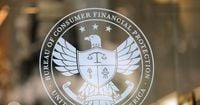On August 15, 2025, a sharply divided federal appeals court cleared the way for President Donald Trump’s administration to resume mass firings at the Consumer Financial Protection Bureau (CFPB), marking a dramatic turn in the ongoing battle over the future of one of Washington’s most controversial regulatory agencies. The 2-1 decision by the U.S. Court of Appeals for the District of Columbia Circuit vacated a lower court’s injunction that had temporarily halted the Trump administration’s attempts to drastically downsize the CFPB—an agency born in the aftermath of the 2008 financial crisis to police the consumer finance industry.
The ruling, however, does not take effect immediately. According to Fox Business, the appeals court specifically delayed implementation, giving lawyers for CFPB employees and pro-consumer groups time to ask the full court to reconsider. This means that, at least for now, the roughly 1,500 workers who received layoff notices in March and April 2025 will not immediately lose their jobs. But the threat to their employment—and the broader mission of the CFPB—remains very much alive.
At the heart of the case was whether a federal district court in Washington, D.C., had the authority to block the Trump administration’s sweeping layoffs. Judge Gregory Katsas, writing for the majority and joined by Judge Neomi Rao—both Trump appointees—ruled that the lower court overstepped its bounds. "We hold that the district court lacked jurisdiction to consider the claims predicated on loss of employment, which must proceed through the specialized-review scheme," Katsas wrote, as reported by Fox Business and The New York Times. The majority also found that other objections raised by the plaintiffs did not pertain to reviewable, final agency actions or unconstitutional acts, further undercutting the legal basis for the injunction.
Yet, the dissenting voice on the panel, Circuit Judge Cornelia Pillard—an Obama appointee—offered a starkly different view. In her 60-page dissent, Pillard argued that the lower court acted properly in blocking the mass firings, asserting, "It is emphatically not within the discretion of the President or his appointees to decide that the country would benefit most if there were no Bureau at all." She added, "The notion that courts are powerless to prevent the President from abolishing the agencies of the federal government that he was elected to lead cannot be reconciled with either the constitutional separation of powers or our nation's commitment to a government of laws." Her words, cited by The New York Times and Reuters, echo the deep divisions over the role and independence of federal regulatory agencies.
The CFPB itself was established by Congress in 2010, as part of a sweeping response to the financial crash of 2008. Its mandate: to oversee consumer finance industries, address risky lending practices, and protect Americans from deceptive and abusive financial schemes. The agency was the brainchild of Senator Elizabeth Warren and quickly became a focal point for both praise and criticism. Supporters saw it as a vital watchdog; detractors, especially conservatives and business groups, accused it of regulatory overreach and stifling free enterprise.
President Trump’s antagonism toward the CFPB has been no secret. According to TNND and The New York Times, the agency was a frequent target for his efforts to reshape the federal government, often framed in terms of fighting fraud, waste, and abuse. The Department of Government Efficiency, led by tech billionaire Elon Musk before he stepped down earlier in 2025, made the CFPB a central focus of its cost-cutting ambitions. In a striking move, less than three weeks into Trump’s second term, acting CFPB director Russell Vought—who also led the Office of Management and Budget—ordered the agency’s employees to cease "all supervision and examination activity," effectively freezing operations. Layoff notices for nearly 1,500 of the agency’s 1,700 employees soon followed.
The administration’s intentions were clear in court filings and public statements. While some senior officials suggested the agency might be kept alive in a much-reduced form, others—including Trump and adviser Elon Musk—spoke openly about dismantling it entirely. Evidence presented in federal court showed that the attempted mass dismissals in March and April 2025 left entire CFPB offices vacated or so severely understaffed that they were incapable of performing their legal duties. Lawyers representing CFPB workers and consumer advocates described the situation as an existential threat to the agency’s core mission.
Jennifer Bennett, an attorney for the plaintiffs, did not mince words about the stakes. In a statement quoted by Reuters and Fox Business, she warned, "Without the full force of the Consumer Financial Protection Bureau—an agency Congress created specifically to protect consumers—millions will lose critical safeguards against predatory financial practices. If this decision is allowed to stand, it will shift the balance of power toward corporations at the expense of American families’ financial security." Her concerns were echoed by pro-consumer groups and unions, who argued that the public would be left vulnerable to bad actors in the financial marketplace if the agency were gutted.
The legal wrangling has not gone unnoticed by government watchdogs. Earlier this year, both the Federal Reserve’s inspector general and Congress’s Government Accountability Office launched investigations into the Trump administration’s actions at the CFPB, according to Reuters. These probes add another layer of scrutiny to an already contentious episode, raising questions about executive power, congressional intent, and the future of consumer protection in the United States.
For now, the immediate fate of the CFPB and its workers hangs in the balance. The appeals court’s ruling gives the plaintiffs a brief window to seek further review, but the broader conflict over the agency’s survival seems far from over. As the legal process grinds on, the story of the CFPB—born from crisis, forged in controversy, and now facing perhaps its greatest test—continues to unfold in real time, with the financial security of millions of Americans potentially at stake.
With the judicial and political battles raging, the CFPB’s mission and very existence remain uncertain, a stark reminder of how quickly the machinery of government can be reshaped—and of the enduring tensions between executive ambition, legislative design, and public accountability.

